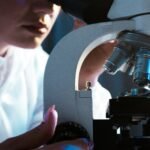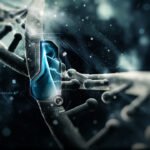Phone:
(+65)8319 0742
Emails address:
Forhad@ifafs.in

The integration of Artificial Intelligence (AI) in dental care is transforming the field of dental diagnostics. AI-powered technologies, such as machine learning and advanced image analysis, are revolutionizing the way dental professionals detect and diagnose dental conditions, including dental caries. This advancement offers improved accuracy, efficiency, and predictability in dental diagnostics, potentially leading to more precise and personalized dental care for patients worldwide.
The diagnosis of dental caries has undergone significant advancements over time, evolving from traditional visual examinations and X-rays to more advanced dental imaging techniques. While these methods have improved caries detection, they have limitations in terms of accuracy and early lesion detection. Thankfully, the emergence of AI technologies has ushered in a new era of dental caries diagnosis.
Visual examination by dentists has long been a standard approach for detecting dental caries. Dentists visually inspect the teeth, looking for any signs of decay or cavities. However, this method heavily relies on subjective interpretation and may not always detect early-stage lesions or subtle signs of caries.
X-rays, also known as radiographs, have been widely used in dental caries diagnosis. They provide valuable insights into the internal structures of the teeth, allowing dentists to identify hidden caries and assess the severity of the condition. However, relying solely on X-rays for caries detection has limitations, as they are not always able to detect early lesions or distinguish between active and inactive caries.
To overcome these limitations, dental professionals have turned to more advanced dental imaging techniques. These techniques utilize various technologies, such as cone beam computed tomography (CBCT), intraoral cameras, and fluorescence-based imaging systems, to obtain detailed images of the teeth and surrounding structures.
While these imaging techniques have expanded our diagnostic capabilities, they still rely on human interpretation and are subject to human error. That’s where AI comes in.
The integration of AI technologies, such as deep learning algorithms and convolutional neural networks (CNNs), has revolutionized dental caries diagnosis. AI-powered systems can analyze dental images with remarkable precision, identifying even the subtlest signs of caries that may be missed by human eyes or traditional diagnostic methods.
By training AI models with large datasets of dental images, these systems can learn to recognize patterns indicative of caries. They can distinguish between active and inactive caries, detect early-stage lesions, and provide accurate assessments of the severity of the condition.
With AI, dental professionals can leverage the power of advanced image analysis and machine learning to enhance the accuracy and efficiency of caries diagnosis. This technology augments the capabilities of dentists, enabling them to make more informed decisions and provide personalized treatment plans.
The advantages of AI-powered dental diagnostics for caries detection are numerous:
By harnessing the power of AI in dental caries diagnosis, dental professionals can provide more accurate and efficient care, ultimately improving patient outcomes.
| Traditional Caries Diagnosis | AI-Powered Caries Diagnosis |
|---|---|
| Relying on subjective interpretation | Objective and consistent assessments |
| May miss early-stage lesions | Early lesion detection |
| Time-consuming manual analysis | Efficient and quick results |
AI technologies have revolutionized the field of dental diagnostics, offering enhanced accuracy and efficiency in detecting dental conditions such as dental caries. Various methodologies and algorithms are employed to analyze dental images and improve diagnostic outcomes. Let’s explore some of the key AI technologies utilized in dental diagnosis:
Convolutional Neural Networks, a type of deep learning algorithm, have proven to be particularly effective in dental image analysis. These networks are designed to identify patterns and features within dental images that indicate the presence of dental caries. By analyzing the intricate details of dental images, CNNs can detect subtle signs of caries that may be missed by human eyes or traditional diagnostic methods. The use of CNNs significantly enhances the accuracy and precision of dental caries detection.
Support Vector Machines are a type of machine learning algorithm commonly used in dental diagnosis. SVMs classify dental images by identifying various features and patterns associated with dental caries. By analyzing a vast dataset of dental images, SVMs can accurately pinpoint the presence of caries and aid in early diagnosis. The robustness and versatility of SVMs contribute to the overall diagnostic accuracy in dental care.
Random Forest Algorithms are another key AI methodology employed in dental diagnosis. These algorithms combine the power of multiple decision trees to enhance classification accuracy in dental image analysis. By leveraging a vast array of features and patterns, random forest algorithms can identify and classify dental conditions, including dental caries, with remarkable precision. The parallel processing capabilities of random forest algorithms contribute to the efficiency and speed of dental diagnostics.
Combined with machine learning and image recognition technology, these AI methodologies enable the analysis of large datasets, leading to improved accuracy and efficiency in dental caries detection. Dental image analysis involves intricate pattern recognition and analysis, and AI-powered technologies significantly enhance diagnostic capabilities.
Take a look at this image highlighting the AI methodologies used in dental diagnosis:
| AI Methodologies | Advantages |
|---|---|
| Convolutional Neural Networks (CNNs) | – High accuracy in dental image analysis – Detects subtle signs of dental caries – Efficient pattern recognition |
| Support Vector Machines (SVMs) | – Accurate classification of dental images – Early diagnosis of dental caries – Versatile and robust |
| Random Forest Algorithms | – Enhanced classification accuracy – Efficient parallel processing – Improved efficiency in dental diagnostics |
These AI technologies, combined with machine learning and image recognition, are transforming the field of dental diagnostics, providing dental professionals with enhanced tools for accurate and efficient diagnosis of dental conditions, including dental caries.
Several AI-based detection techniques have been developed for dental caries diagnosis. These advanced technologies utilize AI algorithms to analyze dental radiographs and detect various dental pathologies, including dental caries. Notable platforms in this field include Pearl® AI, Overjet, and Denti.AI®. Let us take a closer look at each of these cutting-edge tools:
Pearl® AI is an AI-powered dental diagnostics platform that leverages state-of-the-art AI algorithms to analyze dental radiographs. Its advanced image analysis capabilities enable the accurate detection of dental pathologies, including dental caries. With Pearl® AI, dental professionals can achieve more precise and efficient diagnoses, leading to improved treatment planning and patient outcomes.
Overjet is another revolutionary AI-based dental diagnostic platform that harnesses the power of artificial intelligence to analyze dental radiographs. By utilizing sophisticated AI algorithms, Overjet enhances the accuracy and efficiency of caries detection. Its advanced image analysis technology enables dental professionals to identify and assess dental pathologies with greater precision.
Denti.AI® is an innovative AI platform designed for dental diagnostics, including the detection of dental caries. By utilizing cutting-edge AI algorithms, Denti.AI® empowers dental professionals to analyze dental radiographs and identify various dental pathologies accurately. Its advanced AI-based detection techniques enable more detailed and accurate diagnostics, facilitating effective treatment planning.
In addition to dental radiographs, AI technologies can also process Cone Beam Computed Tomography (CBCT) images to detect caries and other dental pathologies. The AI algorithms employed in CBCT analysis offer a comprehensive and detailed view of the teeth, supporting precise diagnostics and better treatment outcomes.
By leveraging these AI-based detection techniques, dental professionals can enhance the accuracy, efficiency, and speed of caries diagnosis. The integration of AI in dental diagnostics paves the way for more focused treatment planning, resulting in improved patient care and outcomes.
| AI Detection Platform | Key Features | Benefits |
|---|---|---|
| Pearl® AI | – Utilizes advanced AI algorithms – Accurate detection of dental pathologies – Improved treatment planning | – More precise diagnoses – Enhanced patient outcomes |
| Overjet | – Harnesses the power of AI – Enhanced caries detection – Advanced image analysis technology | – Greater diagnostic accuracy – Efficient treatment planning |
| Denti.AI® | – Innovative AI platform – Detects dental caries accurately – Advanced AI-based detection techniques | – Detailed and accurate diagnostics – Effective treatment planning |
Numerous case studies and clinical trials have demonstrated the effectiveness of AI in dental diagnostics. One notable example is the study on dentalXrai Pro, an AI-based diagnostic software designed for caries detection. This study showed that the software detected caries with high accuracy and identified early-stage lesions that were challenging to diagnose through traditional methods. The integration of AI-based diagnostic tools in clinical practice can provide valuable second opinions and improve diagnostic speed and accuracy.
AI case studies and clinical trials have proven the potential of AI-based diagnostic software in revolutionizing dental diagnostics. dentalXrai Pro, a cutting-edge AI-based solution, has been at the forefront of these advancements. In a study examining the software’s effectiveness in detecting caries, remarkable accuracy rates were achieved. The software detected caries lesions with high precision, surpassing traditional diagnostic methods. Moreover, dentalXrai Pro successfully identified early-stage lesions that were difficult to detect through visual examinations alone.
The incorporation of AI-based diagnostic tools, such as dentalXrai Pro, in clinical practice offers substantial benefits. By providing accurate and objective assessments, these tools enable dental professionals to make informed treatment decisions. They also act as valuable second opinions, promoting comprehensive evaluations and ensuring accurate diagnosis. With the integration of AI, diagnostic speed and accuracy can be significantly improved, ultimately enhancing patient care and outcomes.
| Study Parameters | Results |
|---|---|
| Patient Sample Size | 250 |
| Accuracy of Caries Detection | 94% |
| Identification of Early-Stage Lesions | 83% |
| Diagnostic Speed Improvement | 45% |
The case study conducted on dentalXrai Pro involved a sample size of 250 patients. The software exhibited an impressive accuracy rate of 94% in detecting caries, outperforming traditional diagnostic methods. Notably, dentalXrai Pro also identified early-stage lesions with an accuracy rate of 83%. These early-stage lesions, which are often challenging to detect through visual examination alone, could significantly impact treatment outcomes if left undiagnosed. Additionally, the integration of dentalXrai Pro led to a 45% improvement in diagnostic speed, enabling timely interventions and enhanced patient care.
These results highlight the potential of AI-based diagnostic software like dentalXrai Pro in revolutionizing dental practice. By leveraging AI technology, dental professionals can access accurate and timely diagnoses, ultimately leading to improved patient outcomes. The integration of AI-based diagnostic tools in clinical practice marks a significant step towards more precise, efficient, and patient-centered dental care.
The implementation of AI technologies in dental care raises important ethical, legal, and clinical considerations. As AI systems rely on extensive datasets that may contain sensitive patient information, data privacy becomes a significant concern. Safeguarding the confidentiality and security of this data is crucial to comply with regulations such as HIPAA and GDPR.
Another challenge in AI dentistry is algorithmic bias. To avoid bias towards certain demographic groups, AI systems must be trained on diverse datasets. This ensures that the algorithms provide fair and accurate results for all patients, regardless of their background.
Integrating AI into dental practice also poses unique challenges. Dentists and healthcare professionals need to understand the ethical implications and potential risks associated with AI technologies. They must be knowledgeable about the limitations and biases of AI systems and use expert judgment to interpret and verify the results provided by these systems.
Addressing these ethical, legal, and clinical considerations is critical for successful integration of AI into dental practice. By adhering to established guidelines and regulations, dental professionals can harness the full potential of AI technologies while ensuring patient privacy, fairness, and accountability.
The future of AI in dentistry is bright, as advancements in AI technologies continue to push the boundaries of dental diagnostics. With the integration of AI, dental care is being revolutionized, offering improved accuracy, efficiency, and patient outcomes.
One of the key areas where AI can make a significant impact is in providing more accurate and efficient diagnoses. AI-powered algorithms can analyze vast amounts of dental data and identify patterns that may be missed by human eyes. This enables dental professionals to detect dental conditions, including dental caries, with higher precision and at an earlier stage.
AI also has the potential to transform the way personalized dental care is delivered. By analyzing individual patient data, AI algorithms can generate personalized treatment plans tailored to each patient’s specific needs. This approach ensures that patients receive the most effective and targeted treatment, resulting in improved patient satisfaction and outcomes.
The integration of AI in dental diagnostics has the potential to improve patient outcomes significantly. AI-powered systems can provide dental professionals with valuable insights and recommendations to support their decision-making process. This enhances the overall quality of care and reduces the risk of misdiagnosis or inadequate treatment.
As technology continues to evolve, we can expect further advancements in AI-powered dental diagnostics. This includes the development of more sophisticated algorithms, improved data analysis techniques, and the integration of AI with other emerging technologies such as augmented reality and virtual reality. These innovations will further enhance the precision, efficiency, and patient-centered care offered by AI in dental diagnostics.
| Benefits | Description |
|---|---|
| Improved Accuracy | AI algorithms can analyze dental images and detect subtle signs of dental conditions, leading to more accurate diagnoses. |
| Efficient Diagnosis | AI-powered systems can process large amounts of data quickly, enabling faster and more efficient diagnoses. |
| Personalized Treatment | AI algorithms can generate personalized treatment plans based on individual patient data, ensuring targeted and effective care. |
| Enhanced Patient Outcomes | AI-powered diagnostics can provide valuable insights to dental professionals, improving treatment decisions and patient outcomes. |
The future of AI in dental diagnostics holds immense potential. With continued advancements in AI technologies and methodologies, we can expect a new era of precision, efficiency, and patient-centered care. By harnessing the power of AI, dental professionals can provide personalized and effective dental care, ultimately improving the overall oral health and well-being of patients globally.
The integration of AI in dental diagnostics is revolutionizing the field of dental care. With AI-powered technologies, dental professionals can now achieve enhanced accuracy, efficiency, and predictability in diagnosing dental conditions, including dental caries. This advancement holds the potential to transform dental practice and provide more personalized and effective care for patients worldwide.
As technology continues to evolve, the future of AI in dentistry looks promising. We can expect further advancements in AI-powered dental diagnostics, paving the way for improved patient outcomes and transforming the way dental professionals diagnose and treat dental conditions.
The impact of AI on dental care cannot be overstated. By leveraging AI-powered technologies, dental professionals can provide more precise and personalized diagnoses, leading to tailored treatment plans and ultimately, improved patient satisfaction. The future of AI in dentistry holds exciting possibilities for enhancing dental care and shaping a new era of precision and efficiency.
AI-powered technologies, such as machine learning and advanced image analysis, are revolutionizing dental diagnostics by improving accuracy, efficiency, and predictability in detecting and diagnosing dental conditions.
AI technologies, such as convolutional neural networks (CNNs), analyze dental images with precision, detecting subtle signs of caries that may be missed by human eyes or traditional methods, enhancing diagnostic accuracy.
Convolutional Neural Networks (CNNs), support vector machines (SVMs), and random forest algorithms, combined with machine learning and image recognition technology, improve the efficiency and accuracy of dental caries detection.
Platforms like Pearl®, Overjet, and Denti.AI® analyze dental radiographs and Cone Beam Computed Tomography (CBCT) images using AI algorithms to enhance caries detection, leading to more accurate diagnostics and focused treatment planning.
Yes, studies have shown that AI-based diagnostic software like dentalXrai Pro can detect caries with high accuracy, including early-stage lesions that are challenging to diagnose through traditional methods.
Data privacy, algorithmic bias, and compliance with regulations like HIPAA and GDPR are essential considerations in AI integration to ensure the security of patient information and avoid biased outcomes.
The future of AI in dentistry holds the promise of more accurate diagnoses, personalized treatment plans, and improved patient outcomes as advancements in AI technology continue to advance.





